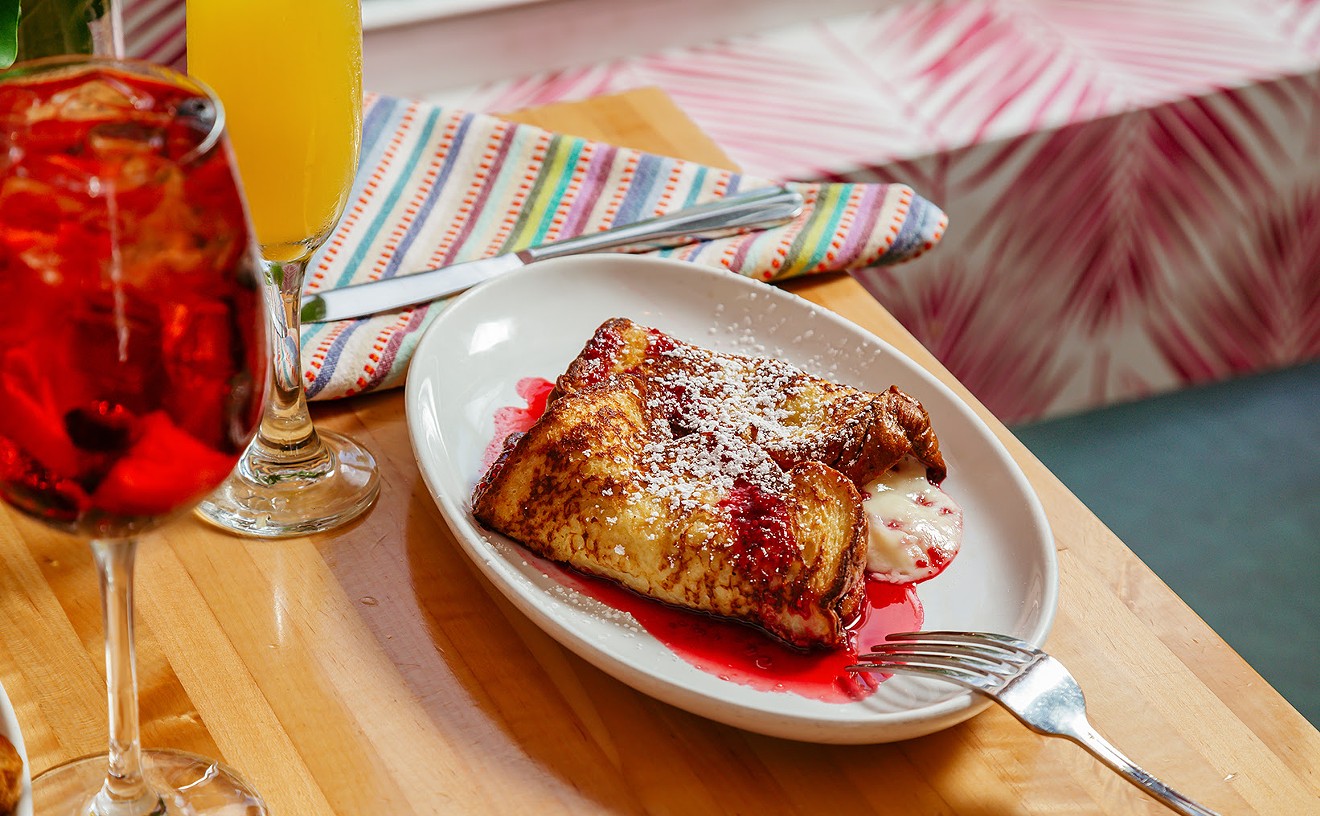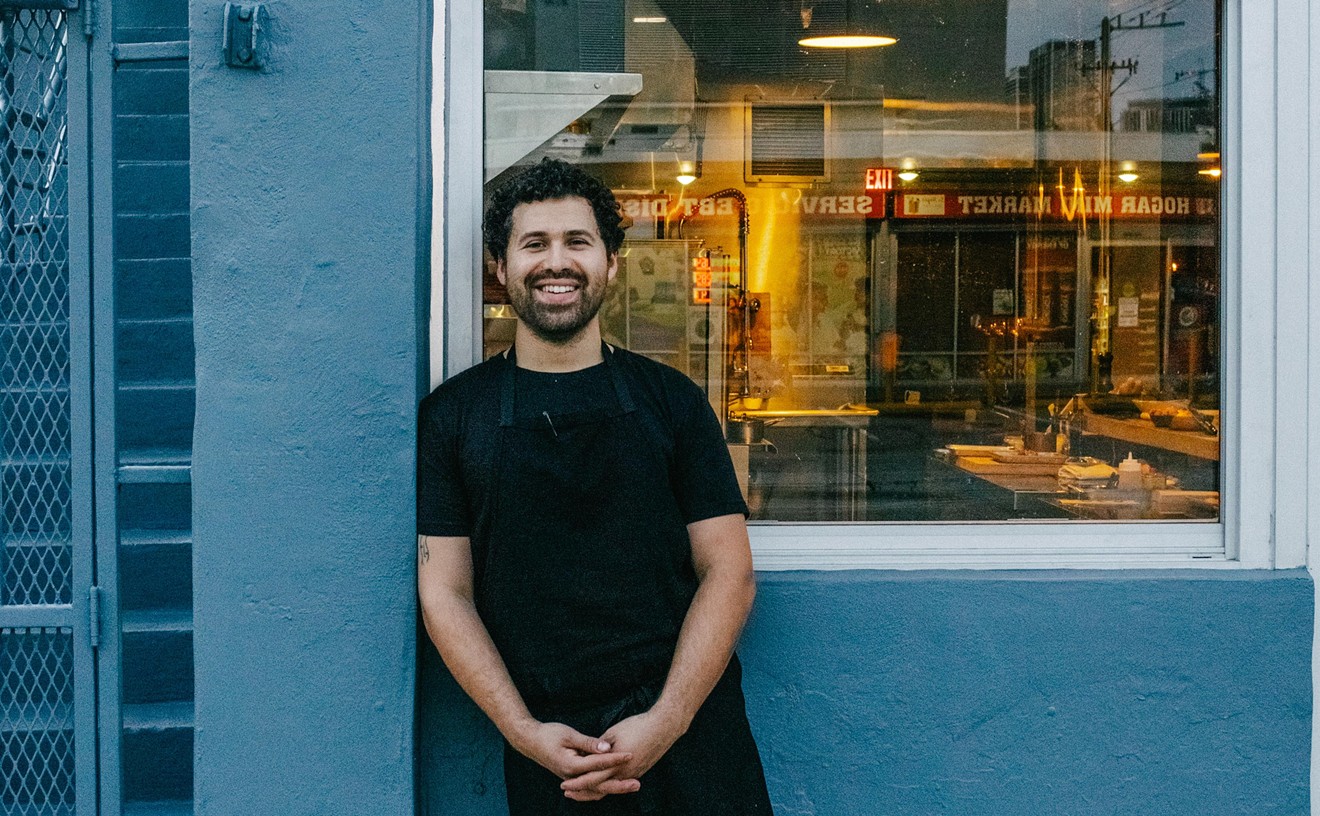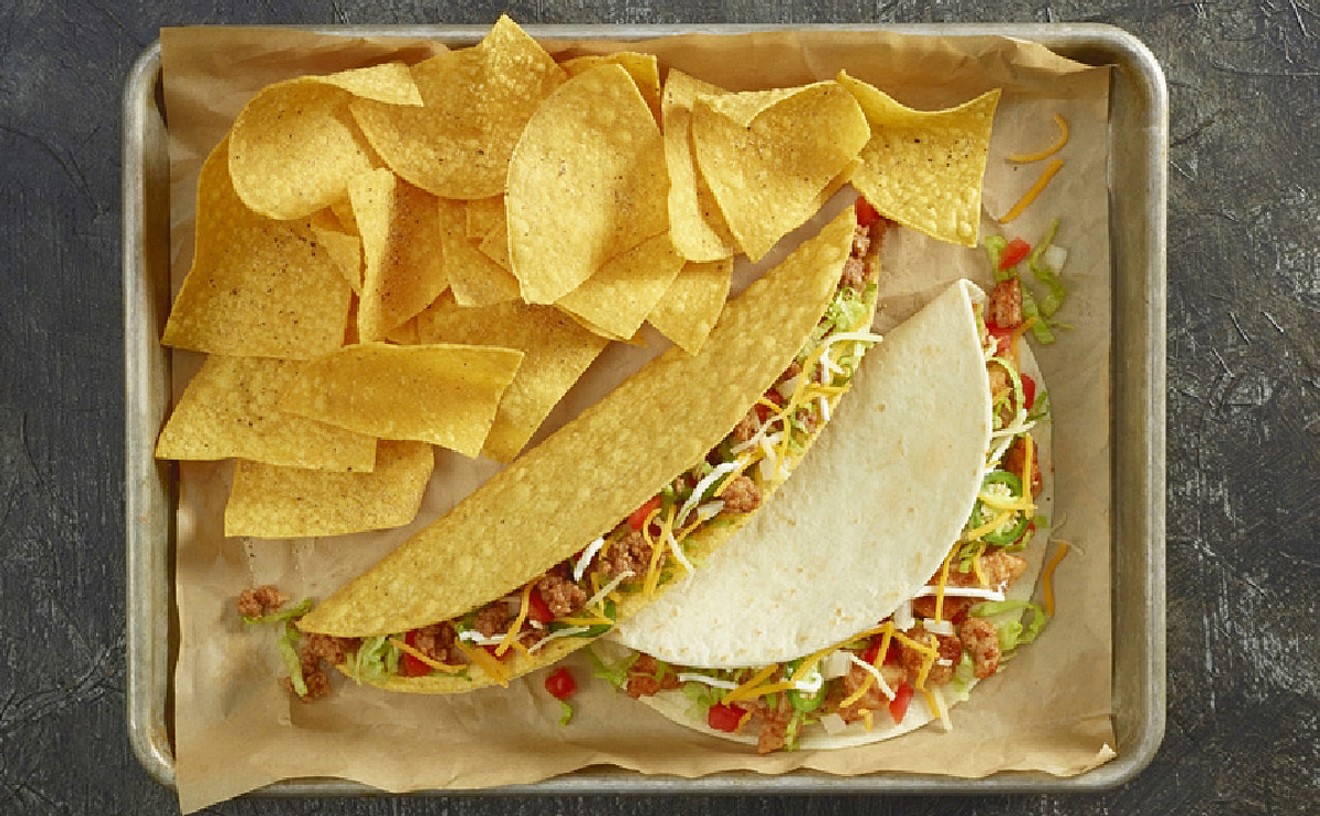The room's swank and swagger haven't changed since Gaucho first opened in 1999, but there's a new sheriff in the kitchen by the name of Ted Peters. Peters previously ran the Loews' larger if less prestigious Preston's, and before that worked at Auguste Escoffier's old digs, the Savoy Hotel in London. Frank Randazzo was the previous chef de cuisine, who with Loews executive chef Marc Ehrler shaped the restaurant into a respected upscale Argentine steak house that also embraced other global ingredients. Latin-American roots have been retained with appetizers such as provoletta, the grilled white cheese that here gets dressed up in tomato petals and coupled with Serrano ham shaved tableside. The empanada, too, is a leftover from Randazzo's menu, but the filling has been switched from beef to braised lamb with truffled potatoes.
Crisply sautéed discs of purple Peruvian potatoes paired well with a juicy wedge of impeccably seared foie gras, accompanying shreds of duck confit, and a "membrillo" jus of quince paste, apple juice, and fresh thyme lending the liver a sweet and savory flavor. Petite nuggets of veal sweetbread were likewise delicious, darkly caramelized on the outside and succulent within, though I would have preferred more sweetbread and less accoutrements -- the plate was mostly taken up by half a bulging braised onion, a crouton-like "quilmes beer crisp" that should have been called a "beer soggy," and a thin but tasty stew of wild mushrooms and smoked leeks.
It's been my observation that soups costing more than $10 are rarely as good as those that cost less: Gaucho's $12 butternut squash soup was overspiked with allspice to the point of tasting like liquidy pumpkin pie filling. Two lobster, yucca, and corn "bitatas," looking like midget crabcakes, were served on the side of the soup to retain their crispness. A milder disappointment was "chopped salad" with warm wild boar bacon dressing that wasn't chopped at all, but rather a routine mound of mesclun greens with gently roasted teardrop tomato halves. Bits of bacon flecked the salad too, but the dressing was more "bore" than "boar."
Peters has brought with him a posse of fresh ideas, the most dramatic being to shift the focus of the menu's "La Parilla" section from Argentina to Japan -- by way of Oregon. Or more accurately by Waygu of Oregon, as in that state's popular Kobe-like cattle. Like their counterparts in Japan, these cows are fed a diet with lots of beer and get their bellies rubbed with sake -- that's probably where the idea for Gaucho's sake-rubbed Kobe short ribs comes from. The only other Kobe option is a ribeye steak at $5 per ounce, with an 8-ounce minimum, but there were none in the house. The waiter suggested the evening's substitute, a Kobe strip steak for $8 an ounce, with a 6-ounce minimum. That's just what I ordered, but if a restaurant is going to offer just one type of Waygu steak they shouldn't be out of that cut, and if they are, the diner should be offered a swap at the same price.
The six-ounce Kobe strip was, not surprisingly, a little flimsy, but it did possess a uniquely beefy flavor both clean and strong. Then again the 16-ounce "Gaucho cut" of New York strip was tender enough from being dry-aged for 21 days, and plenty flavorful from its turn on a wood-fire grill that utilizes continuously burning logs (including apple, cherry, pecan, and oak) -- the gaucho way. The Gaucho strip arrived on the bone; the waiter offered to either slice it for us or leave it as is. I generally like cutting the steak myself, the meat better retaining its warmth and juices, but I went with tableside carving just for the show. The waiter performed well, cutting the meat into hefty slices and then leaning them back on the bone. It would cost $108 for an equal weight of Kobe, which is a large differential for so subtle a difference in taste and tenderness. Whichever you choose, smooth sommelier Pablo Crocetti can assist you in matching it with an appropriately robust wine at equally robust price -- there are some 420 selections from just about every major wine-producing region in the world, including 45 from South American countries.
A great manchego and potato gratin, the rich, full-flavored cheese and mellow cream melding into a velvety bond, was one of half a dozen reasonably priced "acompañamientos," the $5.50 portions capable of feeding two. We were less enthralled with a too-heavily-salted dish of braised rainbow Swiss chard with apple-smoked bacon.
If poultry is for the cook what canvas is for the painter, as Brillat-Savarin once wrote, then Gaucho's bone-in Bell & Evans chicken breast has been turned into a masterpiece. Pan-roasted to perfection, the bird was bathed in a richly flavored thyme-infused broth, and shaded with sweetly glazed strands of spaghetti squash and trio of moon-shaped ravioli wrapped around a delicate duxelle of mushroom and leg meat.
Seafood was also satisfying, a fillet of yellowtail snapper snappily seared in cast iron pan and plunked atop a sensational baby fennel and guajillo chili risotto, each arborio grain seemingly bursting with its own release of sweetly potent tastes. Around the snapper, a subtly seasoned tomato and saffron broth punctuated by big, fat, black-shelled mussels. Another fish dish, sea bass in squid-tomato stew, gets the heat treatment from cascabel chilies -- presumably Peters picked a peck of piquant peppers.
For those of you who've never read Watership Down or owned a bunny as a pet, and therefore aren't necessarily squeamish about eating one, pancetta-wrapped rabbit loin gets served with lentils, homemade chorizo sausage, and braised chard.
Extasia di chocolate, one of numerous showy desserts, is composed of warm chocolate cake with oozy center, bittersweet chocolate sorbet in a freshly made almond tuile cup, and a chocolate-hazelnut wafer dusted in dark chocolate. Tableside flambé of the day might be bananas Foster or, as during our visit, an unremarkable crépe with lemon pastry cream.
Notwithstanding some lapses, like neglecting to offer more water and being a little slow clearing tables (on one occasion our entrées arrived while the appetizer plates remained in front of us), the waitstaff were as professionally crisp as their natty uniforms of white jackets with burgundy bow ties and slacks. The Gaucho Room's service has always been considered strong, as has its ambiance and cuisine. With chef Peters at the helm, it continues to be one of South Beach's most attractive options for fine dining.











